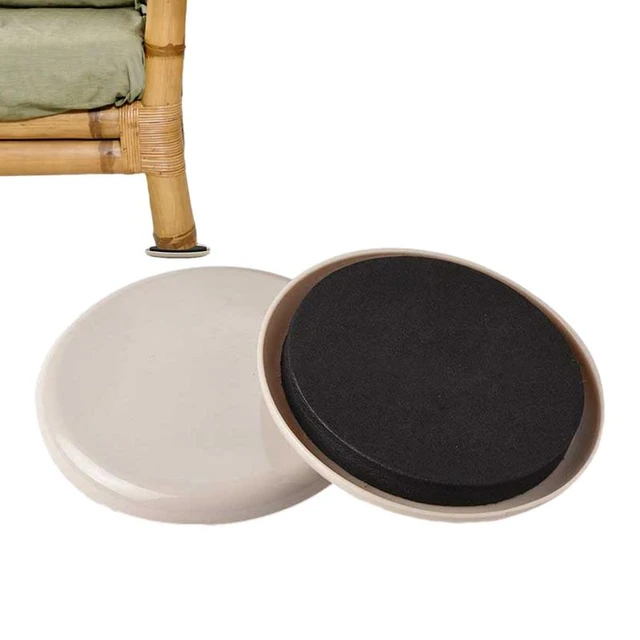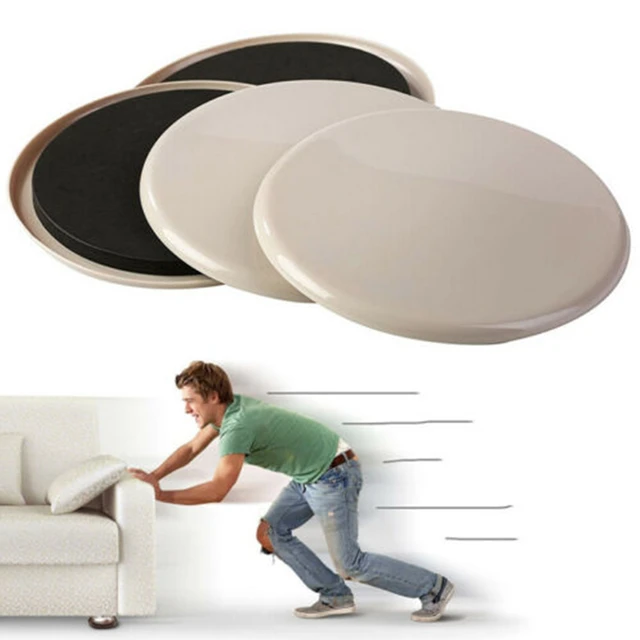 Introduction:
Introduction:
Furniture sliders, also known as furniture gliders or furniture movers, are handy tools that facilitate the movement of heavy furniture with minimal effort. These small yet effective accessories are placed under the legs or base of furniture to reduce friction and allow for easy sliding across various surfaces. In this comprehensive guide, we will explore the features, benefits, and considerations of furniture sliders. By understanding their functionality, types, and their impact on floor protection, individuals can confidently integrate furniture sliders into their home and enjoy the convenience of effortless furniture rearrangement.
Some common materials used for furniture sliders:
Furniture sliders are available in a variety of materials, each offering different advantages and suitability for various surfaces. Here are some common materials used for furniture sliders:
Felt:
Felt sliders are among the most popular options. They are made of soft, thick felt material that helps protect the floor from scratches and scuffs. Felt sliders work well on hardwood, laminate, and tile floors. They provide a smooth and quiet glide when moving furniture.
Plastic or PVC:
Plastic or PVC sliders are durable and easy to use. They come in different shapes and sizes, such as round or square. Plastic sliders work effectively on carpeted surfaces, allowing furniture to move easily without causing damage or leaving marks.
Rubber or Silicone:
Rubber or silicone sliders are known for their grip and slip resistance. They are particularly useful on hard surfaces like tile or wood, providing stability and preventing furniture from sliding or moving unintentionally.
Metal:
Some furniture sliders are made of metal, typically with a smooth surface or a layer of protective material like plastic or felt. Metal sliders are suitable for heavy furniture and are often used on industrial or commercial surfaces like concrete or epoxy-coated floors.
Combination Materials:
Some furniture sliders combine different materials to offer versatility and protection on various surfaces. For example, a slider may feature a felt bottom for smooth movement on hard floors and a rubber or plastic top for grip on carpets.
When choosing furniture sliders, it’s important to consider the specific surface you’ll be using them on, the weight of the furniture, and the desired level of protection. Make sure to select sliders that are appropriate for your particular needs and follow any manufacturer guidelines for installation and usage.
 Functionality and Types
Functionality and Types
Reducing Friction:
Furniture sliders function by reducing friction between furniture and the floor, allowing for smooth and effortless movement.
They are typically made of materials like plastic, rubber, or felt that provide a smooth surface for sliding.
Sliding Mechanisms:
Furniture sliders come in various designs, including sliders with foam cushions, plastic glides, or felt pads.
These mechanisms ensure minimal resistance and protect both the furniture and the floor during the moving process.
Benefits and Advantages
Effortless Furniture Rearrangement:
Furniture sliders eliminate the need for lifting or dragging heavy furniture when rearranging a room.
By placing sliders underneath the furniture, individuals can easily glide furniture across the floor without straining their backs or damaging the furniture or flooring.
Versatility and Ease of Use:
Furniture sliders can be used on a variety of furniture types, including sofas, tables, chairs, and even appliances.
They are simple to install, with some sliders featuring adhesive backing for easy attachment.
Floor Protection:
Furniture sliders create a protective barrier between the furniture and the floor, preventing scratches, scuffs, or dents.
Sliders made of felt or rubber are particularly effective in safeguarding delicate flooring materials like hardwood or laminate.
Considerations for Choosing Furniture Sliders
Weight Capacity:
Consider the weight capacity of the furniture sliders to ensure they can handle the specific furniture piece.
Different sliders have different weight limits, so it is essential to choose sliders that can adequately support the furniture’s weight.
Slider Material:
Depending on the flooring type, choose sliders with appropriate materials to minimize potential damage or marks.
Felt or rubber sliders are ideal for hard floors, while plastic or nylon sliders are suitable for carpeted areas.
Size and Shape:
Select sliders that match the size and shape of the furniture legs or base for optimal fit and stability.
It is essential to choose sliders that align with the furniture’s dimensions to ensure proper weight distribution.
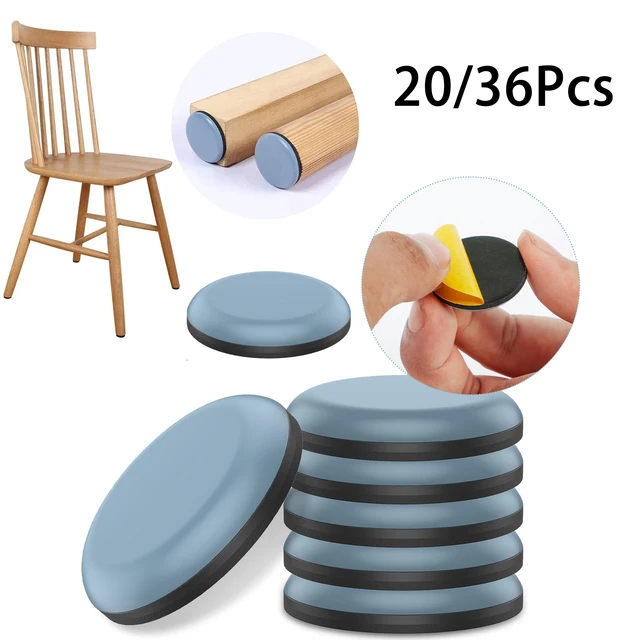 Maintenance and Care
Maintenance and Care
Regular Cleaning:
Clean furniture sliders regularly to ensure debris or dirt does not hinder their functionality.
Gently wipe or brush off any accumulated dirt or dust to maintain smooth sliding action.
Replacement as Needed:
Over time, furniture sliders may wear out or lose their effectiveness.
Monitor the condition of the sliders and replace them when signs of wear or reduced performance are observed.
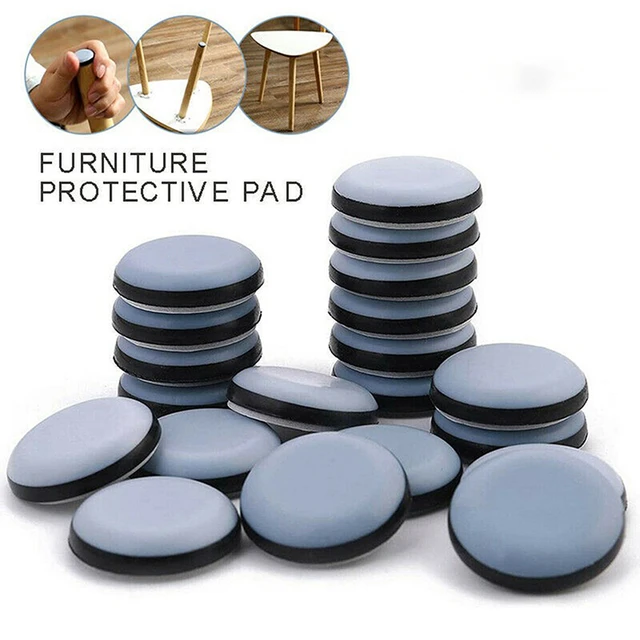 Cleaning furniture sliders:
Cleaning furniture sliders:
Cleaning furniture sliders is a simple process that can help maintain their effectiveness and longevity. Here’s how you can clean them:
Remove the furniture sliders from the furniture legs or corners.
Check the sliders for any debris, dirt, or dust. Use a soft brush or a cloth to gently remove any loose particles.
Fill a basin or sink with warm water and a mild detergent. For example, laundry detergent, washing powder, dish soap, baking soda, etc. Submerge the sliders in the soapy water and let them soak for a few minutes. This will help loosen any stubborn dirt or grime.
Use a soft brush or sponge to gently scrub the sliders, paying attention to any areas that are particularly dirty. Avoid using abrasive cleaners or brushes that may damage the sliders.
Rinse the sliders thoroughly with clean water to remove any soap residue.
Pat the sliders dry with a clean towel or allow them to air dry completely before reattaching them to the furniture.
While the sliders are drying, take the opportunity to clean the furniture legs or corners where the sliders are attached. Wipe them down with a damp cloth to remove any dirt or dust.
Once the sliders and furniture legs or corners are completely dry, reattach the sliders to the furniture.
Regularly cleaning your furniture sliders will help keep them in good condition and ensure smooth movement across various surfaces. It’s a simple maintenance step that can extend the lifespan of both the sliders and your furniture.
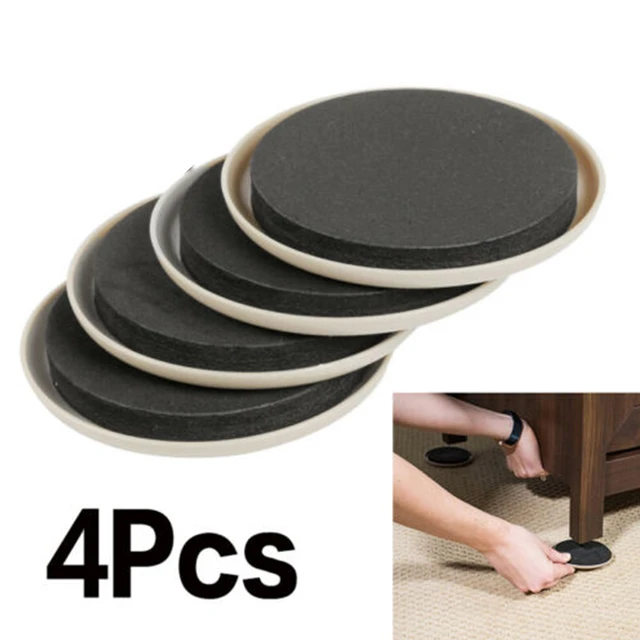 Conclusion:
Conclusion:
Furniture sliders are practical tools that simplify furniture rearrangement and provide floor protection. With their ability to reduce friction and create effortless movement, furniture sliders have become a valuable addition to many homes. By understanding their functionality, benefits, and considerations, individuals can confidently choose furniture sliders that suit their needs and protect their flooring. With the comprehensive information provided in this guide, individuals can enjoy the ease and convenience of furniture sliding, allowing for efficient rearrangement and reducing the risk of floor damage. Embrace the benefits of furniture sliders and transform the way you move and arrange furniture within your home.
